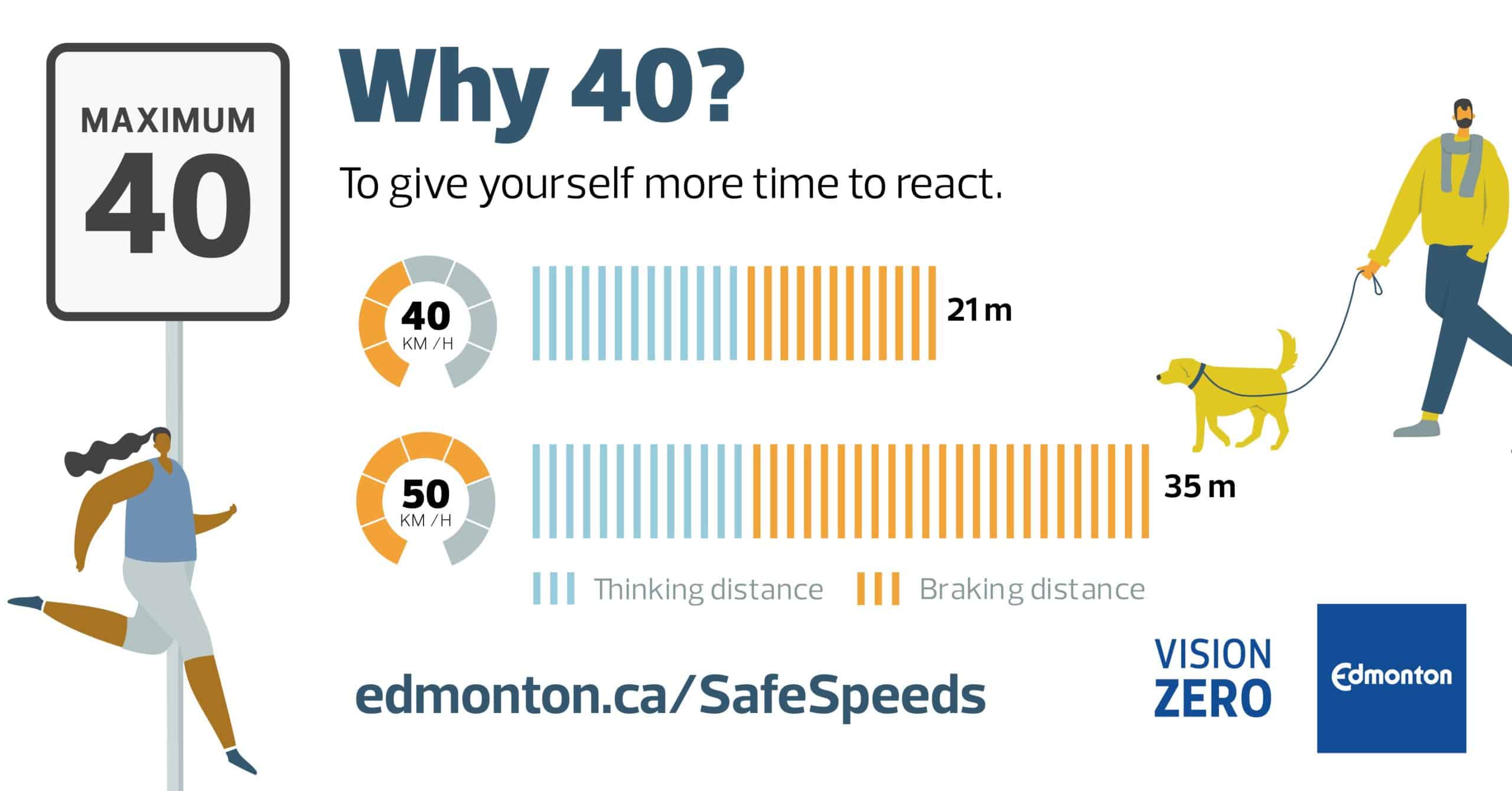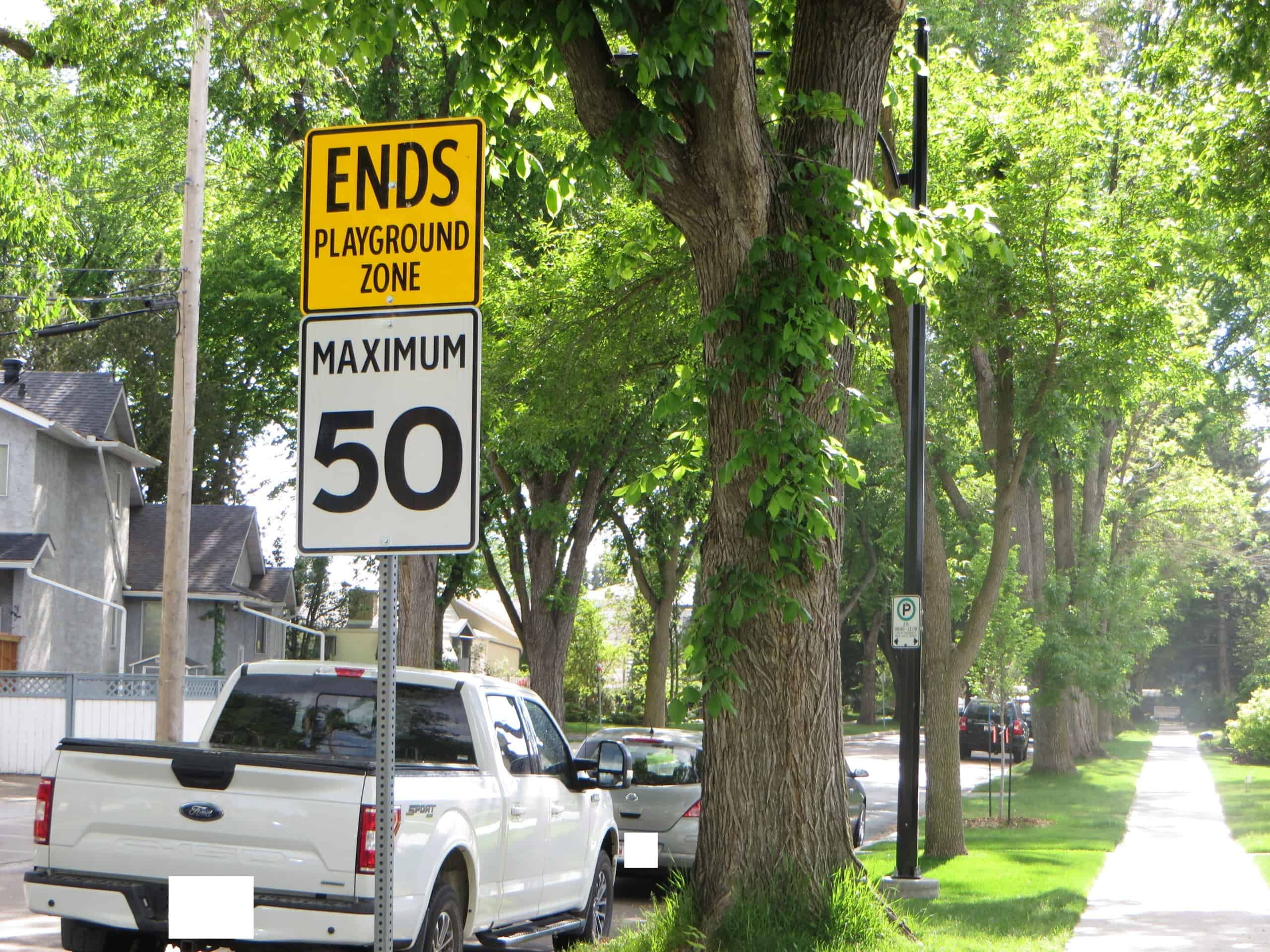Reducing speeds for fewer accidents
Following a decision by Edmonton City Council, starting this August the speed limit will be reduced from 50 km/hour to 40 km/hour on most residential and downtown streets. The exact date of implementation will be announced sometime in July.
By reducing the speed limit by 10 km/hour, there’s a 20 per cent increased likelihood for pedestrian survivability in the event of an accident.

“Crash data from 2015 to 2019 reveals that the majority of pedestrian fatalities and major injuries occurred due to driver error, such as failing to yield to a pedestrian who had the right of way,” says Sarah Giourmetakis, media spokesperson for the City’s safe mobility department.
According to the City website, “Reducing speed limits is one important action within the Safe Mobility Strategy 2021-2025, Edmonton’s approach to advancing Vision Zero. It is a key component of the City’s strategic goals for the next 10 years and supports ConnectEdmonton in creating a safe, healthy, urban and climate resilient city for all residents.”
The change is wonderful news for Ahmar Abdellah, a Norwood resident who recently lost a good friend in a motorbike collision. “Losing a loved one leaves lifelong emotional scars,” he says. “I am glad the City is taking steps to prevent road accidents.”
There will also be fewer signs on the streets. “If there is no speed limit sign on a residential road, the default speed limit will be 40 km/hour,” explains Giourmetakis. Drivers will have a grace period with photo radar to adjust to the new speed limit. The City is also releasing a Safe Speeds Toolkit to the public and will be promoting it with a public education campaign in July. “We will be working with community stakeholders to ensure the toolkit is accessible, including to those without Internet access,” says Giourmetakis.
Nirmal Shengde, a Cromdale resident working in the west end, is concerned that he will need to start driving early to work. “Right now, roads are empty [due to people working from home]. But when people return to work there is bound to be traffic build up, especially since there are also additional traffic lights in certain communities.”
“There will be little impact on driving times as the reduced speed limits will not impact most major roads,” assures Giourmetakis, who encourages people to use the Estimated Time of Arrival Tool on the City website to map out a trip and compare the travel time with current speed limits versus the revised speed limits.
“But won’t there always be speed offenders, regardless of the speed limit?” wonders Peggy Liang, an Alberta Avenue resident. In 2020, 12 people were killed in road traffic collisions.
“Reduced speed limits does help in preventing crashes and reducing the severity of collisions,” says Giourmetakis. “Slowing down increases a driver’s field of vision and gives time to react to the unexpected. However, safety is a shared responsibility. Regardless of how we move around on roads, paths, and spaces, we all need to look out for one another.”
FAQs, ETA tool, and interactive map of roads with new speed limit: edmonton.ca/SafeSpeeds







